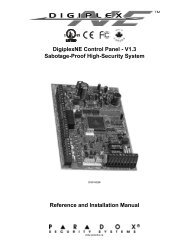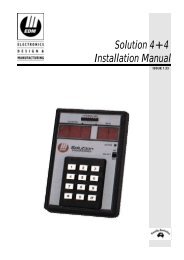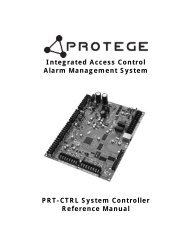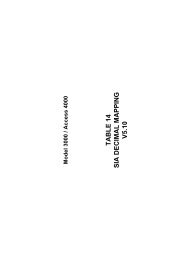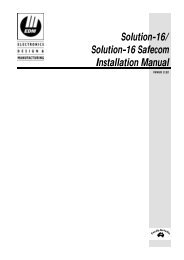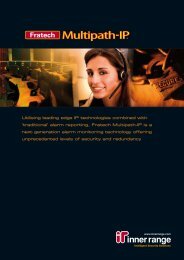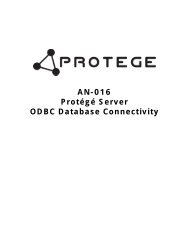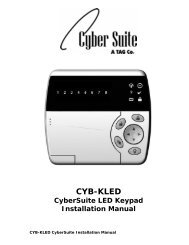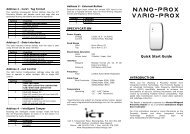SecureStream IP Receiver - Security Help Desk
SecureStream IP Receiver - Security Help Desk
SecureStream IP Receiver - Security Help Desk
You also want an ePaper? Increase the reach of your titles
YUMPU automatically turns print PDFs into web optimized ePapers that Google loves.
Step<br />
Instructions<br />
5 Click the Make LRF button at the bottom of the screen. The system will create the<br />
(encrypted) License Request File (mhq.lrf) on the floppy disk.<br />
Part 2: Email the License Request File to GE<br />
Step<br />
Instructions (continued from previous section)<br />
1 Create an email with the subject heading ‘<strong>SecureStream</strong> <strong>IP</strong> License Request for XX<br />
Challengers’, (where XX is the required number of Challenger panels).<br />
Attach the mhq.lrf file to the email message.<br />
2 Send the message to GE at customerservice@gesecurity.com.au.<br />
GE will authenticate the details and, if correct, add them to their database. GE will then email a<br />
<strong>SecureStream</strong> <strong>IP</strong> license to you as an encrypted email attachment (mhq.lic).<br />
Part 3: Complete the registration process<br />
Step<br />
Instructions (continued from previous section)<br />
1 Once you receive the mhq.lic attachment by email, save the file to a formatted floppy<br />
disk.<br />
2 Insert this floppy disk into the <strong>SecureStream</strong> <strong>IP</strong> <strong>Receiver</strong> floppy drive.<br />
3 Click the Configuration editor navigation icon (see Table 1).<br />
4 Select Application Licensing at the top left, and then select the mhq parcel.<br />
5 Click the Install License From Floppy button at the bottom of the editor page on the right.<br />
The program will read and decode the license file.<br />
A message ‘License for mhq has been installed successfully’ displays.<br />
Troubleshooting license installation<br />
Errors may occur during the registration process. Each error displays an error message. The cause<br />
and the remedy of some common errors are detailed below.<br />
Problem<br />
Registered name must<br />
not be blank.<br />
Can’t access public<br />
key file.<br />
Invalid Ethernet Card<br />
MAC address.<br />
Can’t create LRF.<br />
Cause and remedy<br />
Enter the name of the entity the application is to be registered to in the<br />
‘Registered Name’ field (e.g., Asset Banking Corporation).<br />
The Public Key cannot be found. The public key is installed with the<br />
original software and is used to decrypt all registration files. This error is<br />
unlikely but if it occurs, the solution is to reinstall the public key and<br />
repeat the procedure.<br />
The public key file (mhqpub.pem) can be found on the MHQ License<br />
Management Diskette and is also freely available from DMS. It should be<br />
copied to the directory /usr/local/mhq/data/misc.<br />
The Ethernet card either does not have a valid MAC address or is not<br />
installed. Software registration uses the MAC address of the Ethernet<br />
card to verify the identity of the server when the license file (.lic) is<br />
installed. Install the same Ethernet card that was used when the LRF was<br />
created and try again.<br />
The application cannot create the License Request File. There is a<br />
problem writing to the floppy disk. Likely causes are: the diskette is not in<br />
the floppy drive, or the diskette in the drive is set to ‘Read Only’. Check<br />
the diskette and/or floppy drive and try again.<br />
48 <strong>SecureStream</strong> <strong>IP</strong> <strong>Receiver</strong> Installation & Programming Guide 2.0



